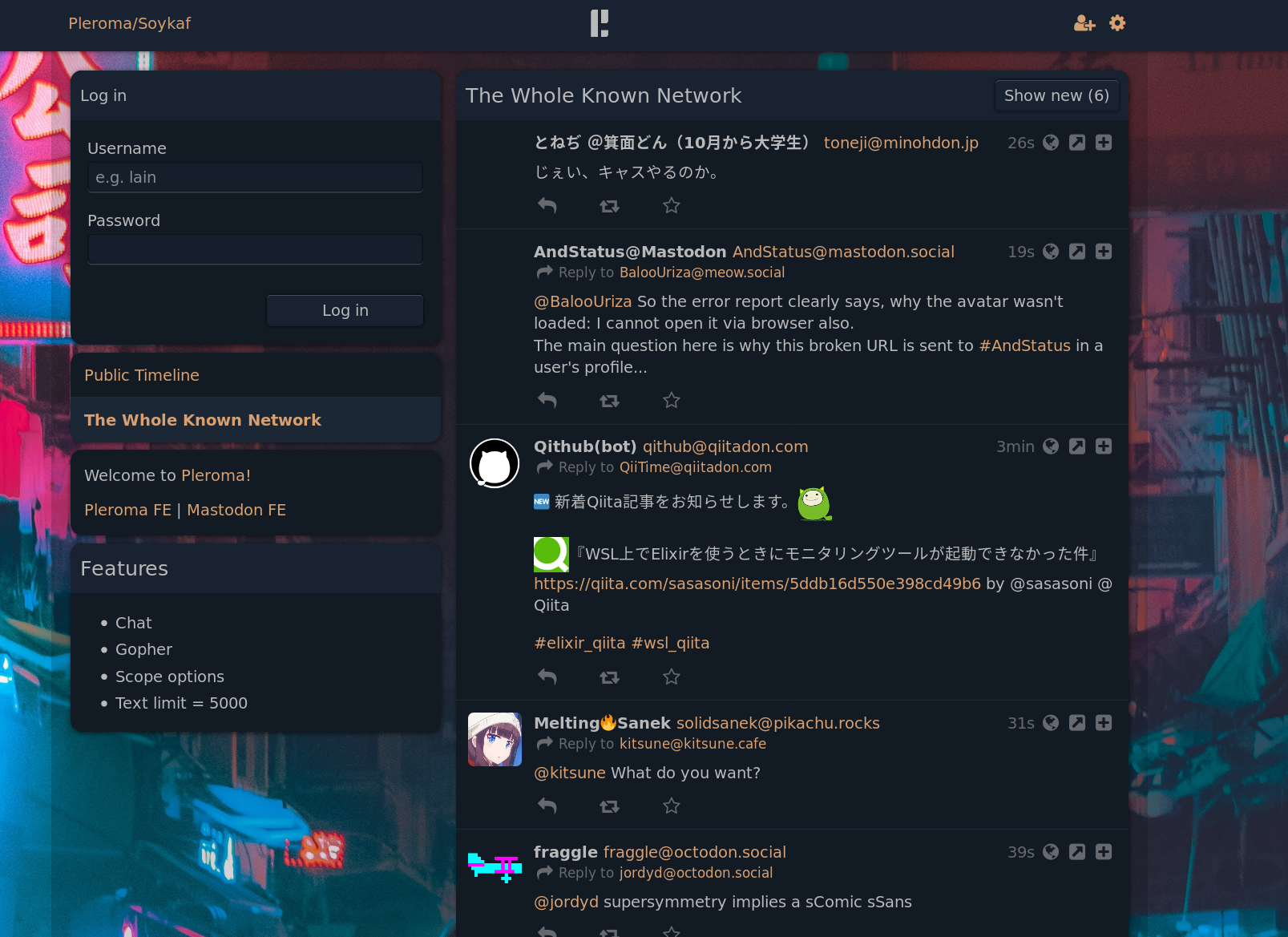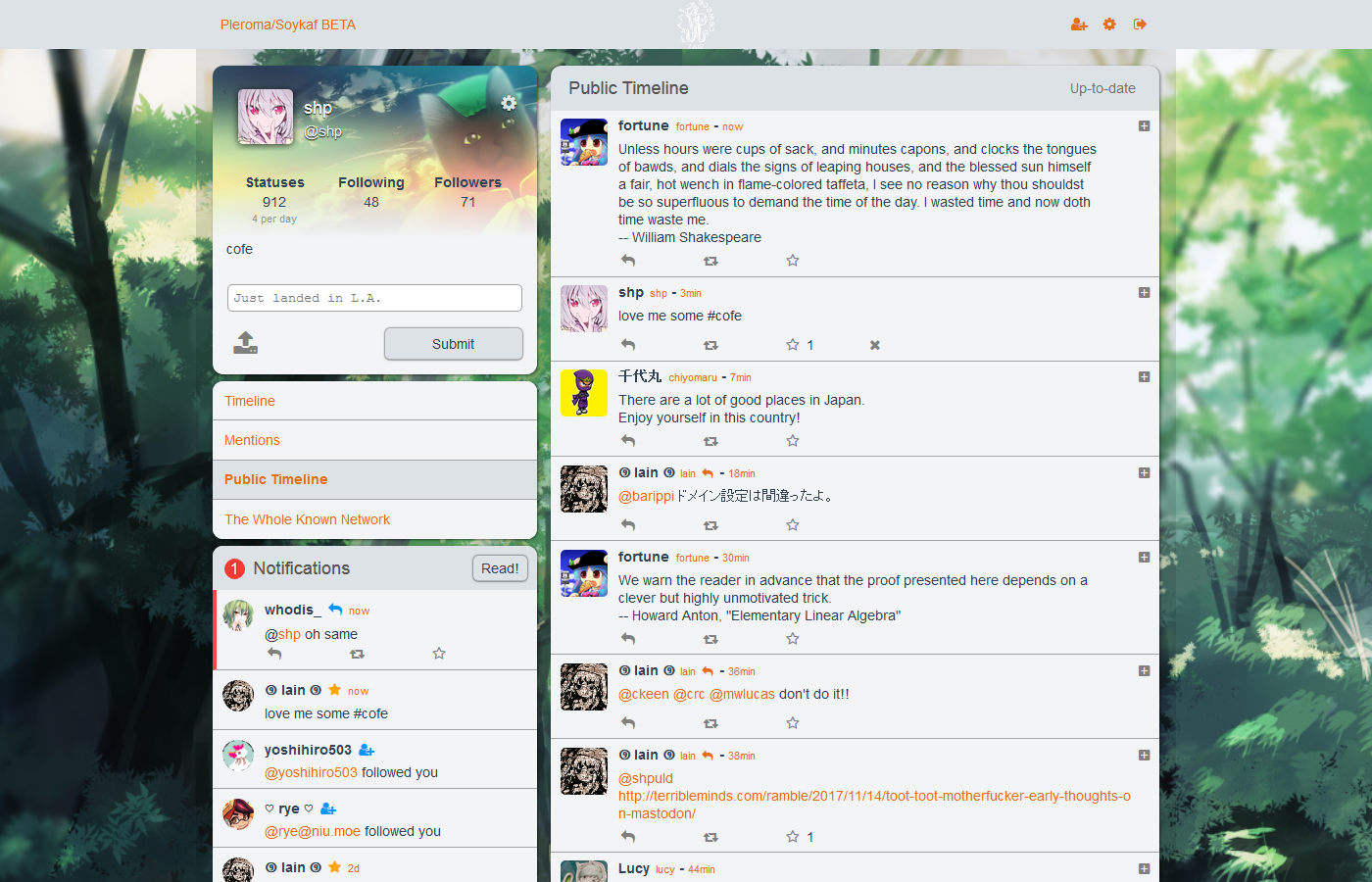Pleroma
Empowering Decentralized Social Networking with Pleroma

Introduction
Welcome to our overview of Pleroma, an open-source, decentralized social networking platform that offers a customizable and privacy-focused alternative to traditional social media. In this article, we will explore what Pleroma is, its key features, who created it, the license it uses, and how it can transform your social networking experience. This guide aims to inform and inspire users to adopt Pleroma for their social media needs.
What is Pleroma?
Pleroma is an open-source, federated social networking platform designed to provide a lightweight and flexible alternative to mainstream social media. It allows users to create and join instances, interact with others across the federated network, and share various types of content. Pleroma offers a customizable and user-friendly interface that prioritizes privacy and data ownership, making it an ideal choice for those seeking control over their online presence. Pleroma was created by a team of developers led by a user named Lain and other contributors from the open-source community. Since its inception, Pleroma has evolved through continuous contributions from developers and enthusiasts worldwide, ensuring that the platform remains up-to-date and responsive to the needs of its users.
Pleroma is released under the GNU Affero General Public License (AGPLv3), which allows users to freely use, modify, and distribute the software. This license encourages transparency and collaboration, ensuring that any modifications to the source code are shared with the community. The open-source nature of Pleroma provides users with complete control over their social networking experience, with the source code available on GitLab.

Key Features of Pleroma
- Decentralized Network: Pleroma operates on a federated network, allowing users to join different instances and interact across them, promoting freedom of expression and reducing the risk of censorship.
- Customizable Interface: Pleroma offers a flexible and customizable interface, enabling users to tailor their social networking experience to their preferences.
- Privacy Controls: Pleroma provides robust privacy settings, allowing users to control who sees their posts and how their data is managed.
- Lightweight and Efficient: Pleroma is designed to be lightweight and efficient, ensuring fast performance and minimal resource consumption.
- Rich Media Support: Pleroma supports various media types, including images, videos, and audio, allowing for diverse content sharing.
- Moderation Tools: Instance administrators have access to comprehensive moderation tools to maintain a safe and respectful community environment.
- Developer-Friendly: Pleroma offers an open API, allowing developers to create custom applications and integrations, expanding the platform’s functionality.
Why Choose Pleroma for Social Networking?
Choosing Pleroma offers several benefits:
- Control Over Data: Maintain ownership and control over your data with a decentralized platform, ensuring privacy and security.
- Community Focus: Join or create communities that align with your interests, fostering genuine connections and engagement.
- Customization: Tailor your social networking experience with extensive customization options and privacy settings.
- Open Source: Benefit from the transparency and innovation of an open-source project with a strong community backing.
- Efficiency: Enjoy a lightweight and efficient platform that ensures fast performance and minimal resource consumption.

Understanding ActivityPub and Federation in Pleroma
Pleroma leverages the power of ActivityPub and federation to create a decentralized and interconnected social networking experience. Understanding these concepts is key to appreciating how Pleroma stands out from traditional, centralized social media platforms.
ActivityPub
ActivityPub is an open and decentralized social networking protocol that allows different servers (or “instances”) to communicate with each other seamlessly. It is a W3C-recommended standard designed to enable interoperability between various social networking services. In the context of Pleroma, ActivityPub ensures that users on different instances can interact, follow each other, and share content effortlessly, regardless of which instance they belong to.
Federation
Federation refers to the interconnected network of independently operated servers that can communicate and share data with each other. In a federated network like Pleroma’s, each instance operates autonomously but remains part of the larger network through the ActivityPub protocol. This decentralized approach provides several benefits:
- Reduced Risk of Censorship: Since there is no central authority, content cannot be easily censored or controlled by a single entity.
- Enhanced Privacy and Control: Users have more control over their data and privacy settings, as each instance can implement its own policies and features.
- Diverse Communities: Federation allows for the creation of niche communities with specific rules and cultures, fostering a diverse and rich social ecosystem.
- Resilience and Redundancy: The federated model enhances the resilience of the network. If one instance goes down or is shut down, the rest of the network continues to operate normally.
By combining ActivityPub with a federated architecture, Pleroma offers a robust and flexible social networking platform. Users can enjoy the freedom to interact across different communities while maintaining control over their personal data and privacy. This decentralized approach not only empowers users but also promotes a healthier and more open internet.

Conclusion
Pleroma is a powerful and flexible social networking platform that offers a decentralized, privacy-focused alternative to traditional social media. Its robust features and community-driven development make it an excellent choice for users seeking control over their online presence. Start using Pleroma today and explore the freedom of decentralized social networking.